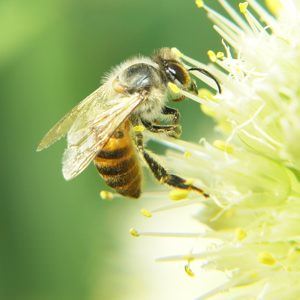
The sole of your foot does lot of work. It carries you around all day long, walking, running, jumping or just standing in one spot. If it doesn’t have adequate support, the thick band of tissue that runs along the sole from the heel to the toes can become inflamed. Doctors call that tissue the fascia; the inflammation is plantar fasciitis. (It’s pronounced FASH-ee-itis.) This common condition can be excruciating. Many people find it difficult to get relief from the pain of plantar fasciitis. However, one reader found an extremely unorthodox solution entirely by accident.
Insect Stings Against Plantar Fasciitis Pain:
Q. You have written in the past about bee or hornet stings easing pain. I have been battling plantar fasciitis for over a year. Two days ago, I stepped on a hornets’ nest and got more than 15 stings.
This was unpleasant, to say the least. Amazingly, though, the next day I woke up with NO plantar fasciitis pain. This topic should be explored more deeply.
Does Venom Ease Pain?
A. Most of the research on stings has been focused on preventing or treating dangerous allergic responses to bee stings. Hornet venom is similar in many ways. Nevertheless, we couldn’t find any studies on hornet stings to treat pain.
Surprisingly, animal research suggests that some insect venom can have anti-inflammatory activity and ease pain (Immunopharmacology and Immunotoxicology, April 2015). Bee venom in particular can help reverse fibrosis and inflammation (Toxicon, June 15, 2018).
This may explain why bee venom has been used for arthritis for thousands of years in Ayurvedic medicine. Beyond arthritis, it may also benefit plantar fasciitis although that entails a somewhat different type of inflammation. In addition, enthusiasts of American folk medicine have also embraced the healing power of bee stings. (You can listen to our interview with Dr. Andrew Kochan and Lady Spirit Moon Cerelli. It is Show 1032: How to Use Products of the Bee Hive for Healing.)

Learn About Apitherapy:
You can learn more about “apitherapy” (the technical term for bee venom therapy) and other nondrug strategies for relieving pain in our online resource, the eGuide to Alternatives for Arthritis.
A Word of Warning:
Some people are allergic to bee, hornet or wasp stings. For them, such an accident could be life-threatening. Not only should they not seek out stings, they should keep epinephrine on hand in case they get stung inadvertently.
Citations
- Nipate SS et al, "Evaluation of anti-inflammatory, anti-nociceptive, and anti-arthritic activities of Indian Apis dorsata bee venom in experimental animals: biochemical, histological, and radiological assessment." Immunopharmacology and Immunotoxicology, April 2015. DOI: 10.3109/08923973.2015.1009996
- Zhang S et al, "Bee venom therapy: Potential mechanisms and therapeutic applications." Toxicon, June 15, 2018. DOI: 10.1016/j.toxicon.2018.04.012

